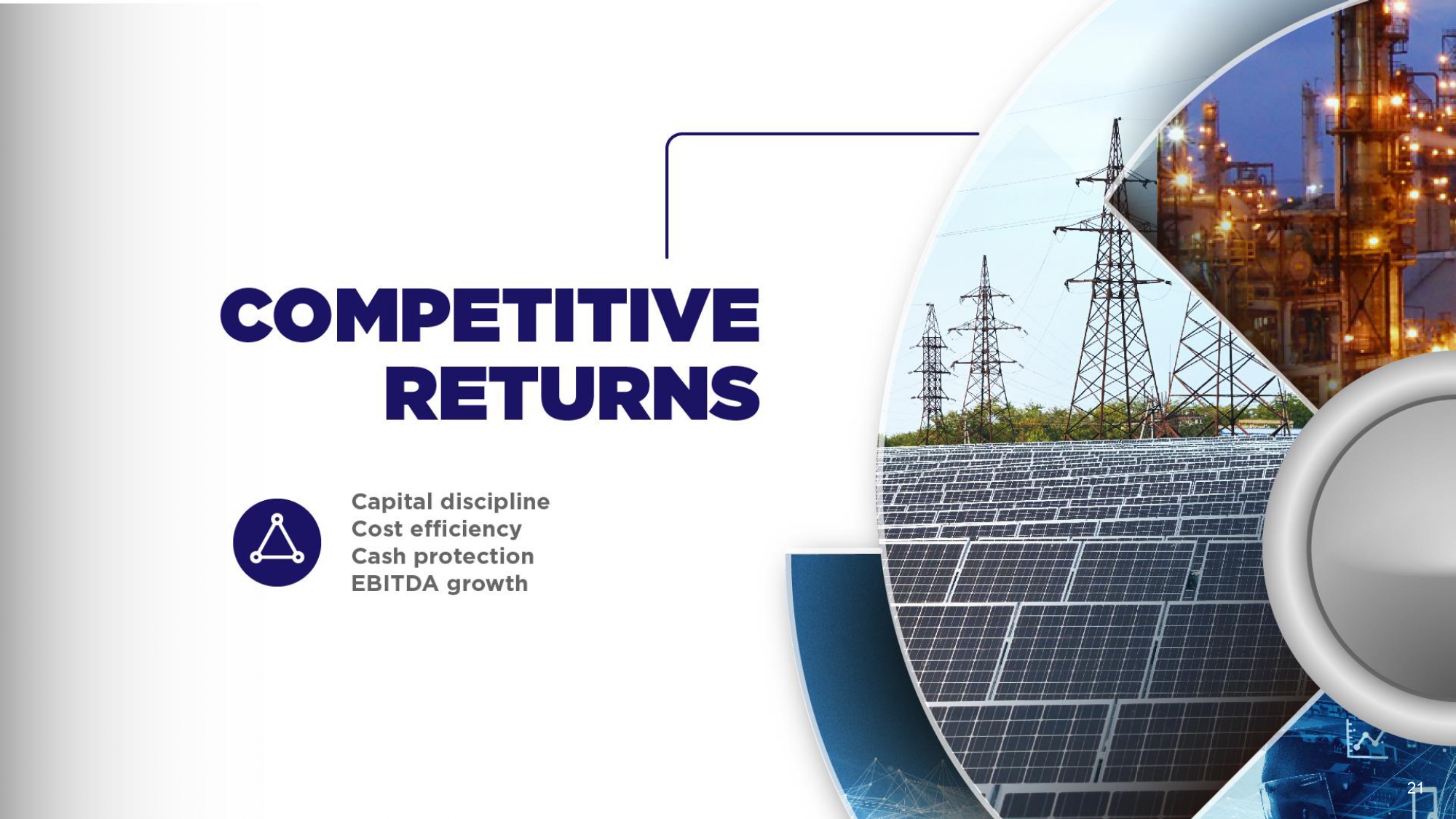Z6_OAH81840O8UC40QNR8CJRJ7KD1
Z7_OAH81840O8UC40QNR8CJRJ7KT2
 Competitive returns
Competitive returns

- The fourth pillar ensures the continuity of the strict capital discipline, rigorous efficient use of resources and protection of GE's cash, which has been leveraging GE's strategy since 2015.
- The investment projects of the 22 - 24 Plan have an average breakeven price of USD 36/Bl which shows an expectation of value supported by the quality and resilience of the organic portfolio and the rigorous process of optimizing the use of liquidity, which at a moderate expectation of international crude oil prices (USD 45 - 55/Bl) will allow the GE to achieve incremental returns above the capital discipline prices. The Plan is profitable and robust at Brent prices of USD 63/Bl by 2022 and USD 60/Bl by 2023 and 2024, with an EBITDA margin above 40% and operating cash flow close to COP 95 billion over the three years of the plan.
- The Group has proposed a new competitiveness agenda that seeks to achieve efficiencies of COP 4 billion accumulated by 2024, of which COP 2.7 billion will have an impact on EBITDA and COP 1.3 billion on CAPEX. With this, it is expected that the lifting cost will be less than 10 USD/Bl, the refining cash cost will be in a range between 4.8 and 5.3 USD/Bl and the cost per barrel transported will be around 3.3 USD/Bl. Likewise, ROACE is expected to be above 8.5% and debt levels in line with stand-alone investment grade, with a Gross Debt/EBITDA ratio below 2.5x. 6
- In the long term the aspiration includes: (i) achieving EBITDA between USD 9 billion and USD 12 billion per year by 2030, and USD 13 billion and USD 14 billion per year by 2040, (ii) ROACE of between 8% and 10%, (iii) maintaining the ordinary dividend policy between 40% and 60% in line with operating results, and (iv) maintaining the Gross Debt/EBITDA indicator below 2.5x. Overall, this strategy allows us to project a compound annual growth rate (CAGR) of EBITDA between 3% and 4% by 2040. The long-term strategy enables transfers to the Nation of between COP 13 and COP 20 billion on average per year, through royalties, taxes and dividends.
Z7_OAH81840O8UC40QNR8CJRJ7KT1